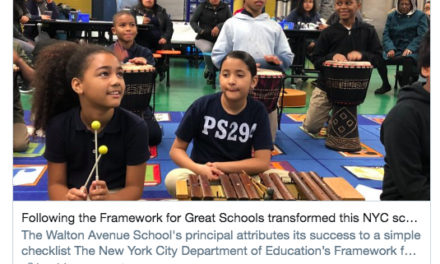The past five years since Parkland have shown that school gun violence coverage needs to be dramatically changed or altogether halted.
On the fifth anniversary of the Parkland school shooting, the Washington Post noted that the total number of children exposed to gun violence at school since 2018 has “exploded” over the past five years, rising from 187,000 in 2018 to 338,000.
However, the same story noted that — while terrifying and more common in the U.S. than in other developed countries — school gun violence remains exceedingly uncommon.
“School shootings are rare,” according to the Post. “A child is highly unlikely to experience one.”
This illustrates perhaps the most important problem of the past five years of gun violence coverage: The relentless focus on shootings that occur at or near schools.
Hard as it may be to believe given this week’s shooting at Michigan State University and the resulting news coverage, there’s a profound mismatch between actual gun violence and what we see in the media.
Everyday gun violence in homes and communities accounts for the vast majority of shootings and deaths. And yet, school gun violence continues to be a focal point.
Of course, school gun violence is terrifying and tragic. We expect schools to be safe places for kids to learn. However, over-focusing on school gun violence isn’t helpful.
The results of this over-focus on school gun violence include unnecessarily terrified students and parents, “hardened” schools that treat kids as threats, and billions in school resources misspent on panic badges and other equipment.
But as you’ll see, the narrow focus on schools is not the only problem of school gun violence coverage over the past five years. There’s a strong case for changing the way we have been doing it — or even reconsidering the practice entirely.
On the fifth anniversary of Parkland, it’s time to ask: What if we stopped covering school gun violence entirely?
There’s a profound mismatch between actual gun violence and what we see in the media.
Problem #1 Credulous coverage narrowly focused on school gun violence
“Credulous coverage that accepts the false belief that children are most at risk of being shot in schools is incredibly dangerous,” noted The Guardian’s Lois Beckett in a 2019 On The Media interview we republished last year.
“We continue to have the same conversation over and over,” said Beckett in an interview with Brooke Gladstone, “trying to prevent 1% of people from dying and not caring about the other 99%.”
This is by far the biggest and most pervasive challenge for media coverage of gun violence — and remains so for the foreseeable future.
Gun deaths are now the top cause of death for American children, noted a recent New York Times report. But school shootings “account for less than 1% of the total gun deaths suffered by American children.”
However, the Post and other outlets have decided that school gun violence should be the focus.
School shootings account for less than 1% of the total gun deaths suffered by American children.
Problem #2 Covering school gun violence as a crime story rather than a public health problem
“We’re treating last week’s shooting as a kind of watershed event, the story of the year, forgetting that this happens all the time, in one form or another,” wrote journalist Greg Toppo in the aftermath of last year’s Uvalde school shooting.
“We’ve spent the past week borrowing families’ photos to share with the world, in the vain hope that these artifacts will somehow make these people the last to suffer this way,” he wrote. “It’s a noble effort, but it’s also a fool’s errand.”
As Toppo points out, there is a strong urge to focus on the individual incident rather than the pattern of incidents — both in and out of schools. But individual incidents, like school gun violence coverage in general, distract readers’ attention from the underlying problems of gun violence writ large.
Individual incidents distract readers’ attention from the underlying problems of gun violence writ large.
Problem #3 Treating school staff and district officials as survivors
Media coverage of school gun violence has often tended to focus on weapons access and law enforcement’s response rather than school or district responsibility. School officials and educators were treated as survivors along with students.
This was especially true in the immediate aftermath of Parkland, during which few outlets initially asked hard questions about what school officials knew and had done before and during the shooting. The Washington Post infamously wrote an early story about how much the school system had tried to help the Parkland shooter, an account that was hard to take seriously at the time and did not stand up to later scrutiny.
This has changed in recent years — and especially in the recent case of Richneck Elementary — but if education journalists are going to cover school gun violence, their first step should be finding out what educators and administrators knew and did leading up to and during the incident.
Problem #4 Traumatizing school staff, students, and parents
Being interviewed about a traumatic event is not easy or harmless, even when the interviewer is as careful as possible. Having snippets from that interview published in a news account can be a negative experience for the survivor, despite all attempts to protect them.
That’s why reporters should take more time to get to know the students they cover without defining them by their trauma, avoid generalizations or assumptions, and focus on making systems rather than communities accountable, according to California reporter Lee Romney.
“Stating that trauma can impact a child’s behavior in school is not wrong,” noted Romney in a 2020 essay for The Grade. “The danger lies in generalizing that kids from a certain background have been adversely affected by trauma.”
Reporting on school gun violence generates the possibility of creating a secondary trauma for survivors, witnesses, and the school community.
Reporting on school gun violence generates the possibility of creating a secondary trauma for survivors, witnesses, and the school community.
Problem #5 Putting journalists at risk
Be prepared for anger – and tears. Question official narratives. Go to meetings. Take “no” for an answer. Take breaks. And be prepared for some extremely difficult moments.
These were some of the pieces of advice shared by reporters who had covered school shootings in the past. “If you need to cry, cry,” advised journalist David DesRoches in 2022. “If you need to vent, vent safely. Write furiously then throw it away — or publish it.”
Every time we send an education reporter out to cover a school shooting, we expose them to trauma and increase the chances that they will be affected negatively by the experience.
Is it worth it?
Previously from The Grade
School shootings, classroom safety, & student trauma coverage
ABOUT THE AUTHOR

Alexander Russo
Alexander Russo is founder and editor of The Grade, an award-winning effort to help improve media coverage of education issues. He’s also a Spencer Education Journalism Fellowship winner and a book author. You can reach him at @alexanderrusso.
Visit their website at: https://the-grade.org/













